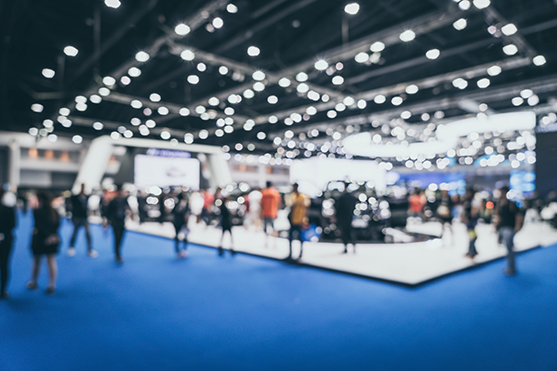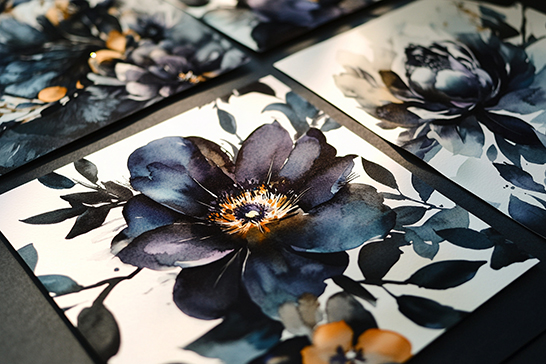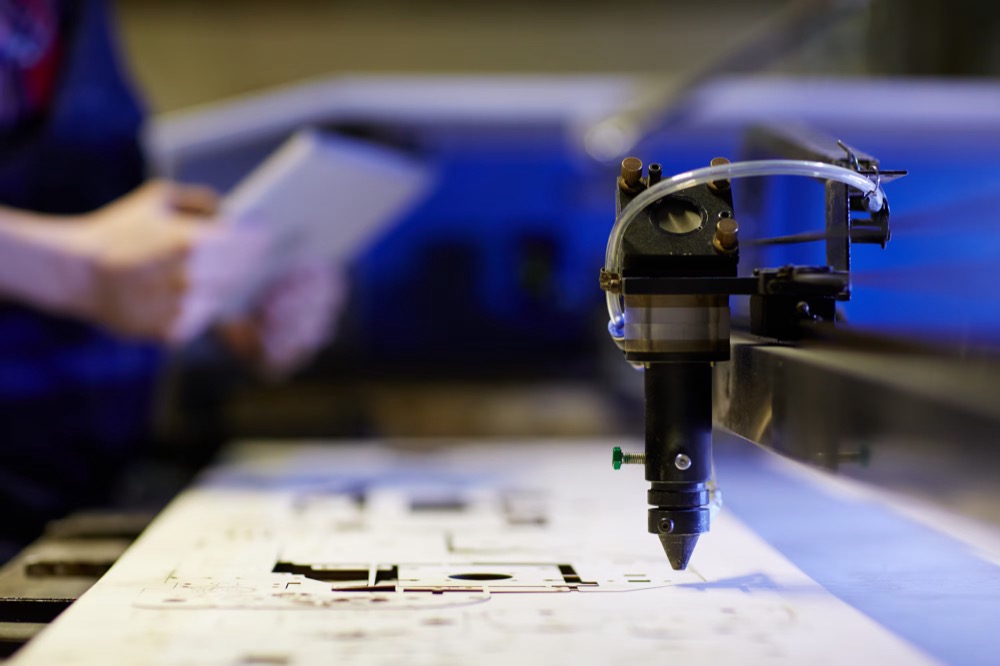Trade show success depends heavily on visual impact. Recent data shows that 81% of trade show attendees remember displays with striking large-format graphics, while only 23% recall standard booth setups. This dramatic difference shows why Miami businesses are turning to advanced commercial printing solutions for their trade show displays.
The rise of large format printing has changed how companies present themselves at trade shows. From floor-to-ceiling banners to interactive displays, the options for catching attention have multiplied.
Popular Large Format Options for Trade Shows
- Retractable banner stands
- Backdrop walls
- Floor graphics
- Hanging banners
- Table displays
Material Choices That Make an Impact
Trade show displays require specific materials based on their intended use:
- Corrugated plastic for lightweight durability
- Foam board for rigid displays
- Fabric for soft, flowing banners
- Vinyl for floor graphics
- Acrylic for premium displays
Size and Scale Considerations
Follow these essential sizing guidelines to create effective trade show displays:
- Measure booth space accurately
- Account for viewing distances
- Consider ceiling height limits
- Plan for storage and transport
- Include setup space requirements
Design Elements That Work
Your trade show graphics must include these key design features to attract attention:
- Clear, readable text from 10+ feet
- Strong brand colors
- Simple, focused messages
- High-quality images
- Strategic white space
Technical Requirements for Quality
To achieve professional-quality trade show displays, you need to focus on these technical details:
- File resolution (150-300 DPI at full size)
- Color profiles (CMYK for printing)
- Bleed areas (0.25 to 1 inch)
- Font size scaling
- Material-specific design adjustments
Installation and Setup Tips
- Test assembly before the show
- Bring backup hardware
- Use proper lighting
- Plan for power needs
- Consider traffic flow
Frequently Asked Questions
How long does large format printing take? Most trade show displays need 5-7 business days for printing and finishing, plus shipping time. Rush orders may be possible with additional fees.
What's the best material for reusable displays? Fabric displays and rigid panels like PVC offer the best durability for repeated use, with proper storage between shows.
How do I transport large format prints? Many displays come with carrying cases. For larger pieces, use protective tubes or flat packaging with corner protection.
Can I update my display graphics later? Yes, many systems allow for graphic panel replacement while keeping the same structure, saving money over time.
Cost Considerations
Budget planning should include:
- Design services
- Printing costs
- Hardware and structures
- Shipping and handling
- Installation support if needed
Making Your Display Stand Out
Success at trade shows comes from combining the right materials, design, and execution. Working with experienced printing professionals ensures your display captures attention and delivers your message effectively.
Ready to create an impressive trade show display? Contact Artful Printers at 305-754-3888 to request a quote today. Our team helps Miami businesses stand out at trade shows with high-impact large format printing solutions.
The choice between canvas and metal prints shapes how artwork connects with viewers. Recent data shows that 65% of Florida art buyers now consider print medium as important as the artwork itself. This shift makes choosing between canvas and metal printing a crucial decision for artists.
Each medium offers unique benefits for different types of art. Understanding these differences helps artists make informed choices that enhance their work's impact.
Canvas Prints: Traditional Appeal with Modern Tech
Canvas printing combines classic aesthetics with current technology:
- Rich, textured surface
- Warm, natural look
- Traditional gallery feel
- Good for oil and acrylic art
- Works well with muted colors
Metal Prints: Contemporary Edge
Metal prints offer modern advantages:
- Sharp detail retention
- Vibrant color display
- Durability in Florida humidity
- Clean, modern look
- UV resistance
Comparing Visual Effects
- Color Vibrancy: Metal shows brighter colors
- Detail: Metal offers sharper details
- Texture: Canvas provides natural texture
- Light Response: Metal has more light play
- Depth: Canvas creates natural depth
Cost Considerations
Price ranges for standard sizes:
- 16x20 Canvas: $40-80
- 16x20 Metal: $80-150
- 24x36 Canvas: $80-160
- 24x36 Metal: $150-300
- Custom Sizes: Variable
Best Uses for Each Medium
Canvas Works Best For:
- Traditional paintings
- Portrait photography
- Landscape art
- Abstract pieces
- Large wall art
Metal Excels With:
- High-contrast photos
- Modern digital art
- Architectural images
- Outdoor displays
- Contemporary spaces
Florida-Specific Considerations
Our climate affects print choices:
- Humidity resistance
- UV protection needs
- Temperature stability
- Salt air effects
- Indoor vs outdoor use
Frequently Asked Questions
How long do canvas prints last in Florida? Quality canvas prints with UV coating last 10-15 years indoors, while proper metal prints can last 20+ years.
Which medium is better for outdoor art? Metal prints handle Florida's outdoor conditions better, with superior moisture and UV resistance.
Can I get the same colors on both mediums? While both offer good color, metal prints typically show more vibrant colors and higher contrast.
What about framing costs? Canvas often needs frames or stretching, while metal prints come ready to hang, affecting total cost.
Making Your Choice
Consider these factors when deciding:
- Your art style
- Display location
- Budget constraints
- Desired lifespan
- Target audience
Technical Requirements
For best results, prepare files properly:
- 300 DPI resolution
- Proper color profiles
- Correct file formats
- Size specifications
- Bleed areas
Ready to bring your art to life? Contact Artful Printers at 305-754-3888 to request a quote today. Our team helps Florida artists choose and create the perfect prints for their work.
The way people shop for homes has changed, but print marketing still drives 48% of real estate inquiries in Miami. Recent data shows luxury property buyers spend 3x more time looking at printed materials than digital listings. This makes high-quality commercial printing essential for real estate success.
Today's real estate marketing needs both digital presence and premium print materials. Let's look at how Miami realtors use professional printing to stand out in a competitive market.
Essential Print Materials for Real Estate
- Property brochures
- Business cards
- Direct mail pieces
- Open house displays
- Large format signs
Choosing the Right Materials
Different materials serve different purposes:
- Foam board for property displays
- High-gloss paper for luxury brochures
- Weather-resistant materials for outdoor signs
- Premium cardstock for business cards
- Specialty papers for direct mail
Property Brochure Best Practices
- Use high-resolution photos
- Include detailed floor plans
- Add area maps and amenities
- Feature property highlights
- Include contact information
Large Format Printing for Impact
Banner printing options include:
- Property banners
- Open house signs
- Office window displays
- Trade show materials
- Photo backdrops
Color and Design Tips
Effective real estate materials need:
- Consistent brand colors
- Clear typography
- Quality images
- Clean layouts
- Professional finish
Technical Requirements
- 300 DPI minimum resolution
- CMYK color mode
- Proper bleed areas
- Vector logos
- Print-ready PDF files
Frequently Asked Questions
What's the best paper for luxury property brochures? High-gloss or silk-coated paper, 100lb weight or higher, works best for luxury real estate marketing materials.
How long do outdoor signs last in Miami's climate? Weather-resistant signs printed on quality materials last 6-12 months outdoors with proper care.
What size should property brochures be? 8.5x11 inches is standard, but 11x17 folded works well for luxury properties with more content.
How many brochures should I order? Order 25-50 brochures per listing initially. You can always print more as needed.
Cost-Effective Printing Strategies
- Bulk ordering for better rates
- Standard sizes to reduce costs
- Template-based designs
- Multi-purpose materials
- Quality over quantity
Making Your Marketing Stand Out
Success in real estate marketing comes from combining quality materials with smart design. Working with experienced printing professionals ensures your marketing materials make the right impression.
Ready to create professional real estate marketing materials? Contact Artful Printers at 305-754-3888 to request a quote today. Our team helps Miami realtors create marketing materials that sell properties faster.
In the world of commercial printing, graphic design plays a vital role. A well-executed design can elevate a project, captivating the audience and conveying the intended message with clarity and impact. Graphic design is crucial for creating successful commercial printing projects.
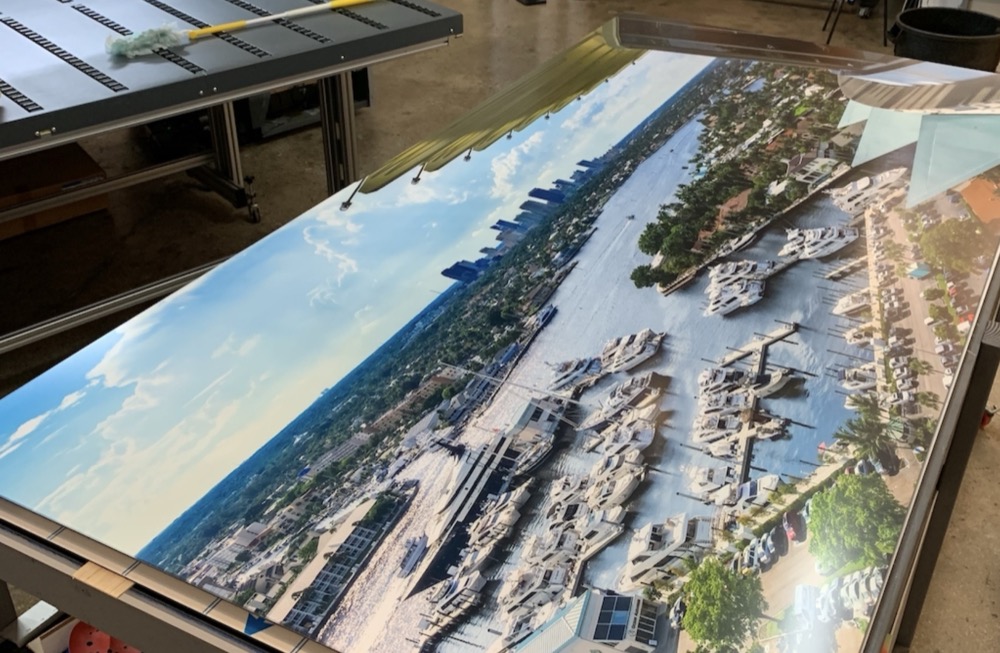
Visual Communication
Graphic design is the art of visual communication. It combines elements such as typography, imagery, color, and layout to convey information engagingly and memorably. Effective graphic design can transform a simple printed piece into a powerful marketing tool that resonates with your target audience.
Brand Identity
A strong brand identity is essential for any business, and graphic design is crucial in establishing and reinforcing that identity. From logos and branding guidelines to consistent visual elements across all marketing materials, a cohesive design approach ensures that your brand is instantly recognizable and leaves a lasting impression.
Key Elements of Effective Graphic Design
- Typography: The careful selection and arrangement of typefaces can significantly impact the overall look and feel of a design, as well as its readability and legibility.
- Color Palette: Colors evoke emotions and can influence how a message is perceived. A well-chosen color palette can reinforce brand identity and create visual interest.
- Layout and Composition: The arrangement of elements on a page or canvas can guide the viewer's eye and create a sense of balance and hierarchy, making the design more visually appealing and easier to navigate.
Collaboration with Designers
Collaboration between printing experts and skilled graphic designers is valuable. By working closely with designers, their creative vision can be accurately translated into a high-quality printed product.
The team is well-versed in the technical aspects of printing, such as file preparation, color management, and substrate selection, allowing them to provide valuable insights and recommendations to designers. This collaborative approach results in printed materials that look stunning and meet the highest standards of quality and durability.
| Design Element | Importance |
|---|---|
| Typography | Enhances readability and reinforces brand identity |
| Color Palette | Evokes emotions and creates visual interest |
| Layout and Composition | Guides the viewer's eye and creates balance |
Elevating Your Commercial Printing Projects
Whether you're a business owner, marketer, or designer, partnering with printing professionals and skilled graphic designers ensures that your commercial printing projects benefit from expertise in both areas. A commitment to quality and attention to detail, combined with a collaborative approach, guarantees that your printed materials will make a lasting impression and effectively communicate your message.
Ready to take your commercial printing projects to the next level? Contact Artful Printers at 305-754-3888 to discuss your project and request a quote. Let us help you create visually stunning and impactful printed materials that elevate your brand and captivate your audience.
In the world of fine art printing, the fusion of modern technology and traditional craftsmanship can create truly remarkable results. Artful Printers knows the importance of blending cutting-edge digital printing methods with time-honored framing techniques to produce exceptional pieces that captivate and inspire.

The Power of Digital Printing
Digital printing has revolutionized the art world, offering artists and photographers an unparalleled level of control and precision. With state-of-the-art equipment and high-quality inks, we can faithfully reproduce even the most intricate details and vibrant colors, ensuring that your artwork retains its integrity and visual impact.
Traditional Framing: A Timeless Art
While digital printing provides the foundation for stunning visuals, traditional art framing techniques add an extra layer of sophistication and elegance. Our skilled artisans meticulously craft each frame, selecting the finest materials and employing age-old methods to create a harmonious marriage between the artwork and its presentation.
Archival Materials
Artful Printers prioritizes the longevity of your artwork. We use only archival-quality materials, including acid-free matboards and UV-resistant glazing, to protect your prints from the ravages of time and environmental factors. This ensures that your artwork remains vibrant and pristine for generations to come.
Custom Framing Options
We understand that every piece of art is unique, and our framing options reflect that diversity. From classic wood frames to sleek metal designs, we offer a variety of styles to complement your artwork's aesthetic. Our team of experts will work closely with you to select the perfect frame, ensuring a cohesive and visually stunning final product.
| Framing Material | Characteristics | Ideal For |
|---|---|---|
| Wood | Warm, natural look | Traditional, rustic, or classic styles |
| Metal | Sleek, modern finish | Contemporary, minimalist, or industrial designs |
| Archival Matboards | Acid-free, UV-resistant | Preserving artwork for long-term display |
Personalized Attention
At Artful Printers, we believe that every project deserves personalized attention. Our team of experts will guide you through the entire process, from selecting the perfect paper and printing method to choosing the ideal framing solution. We take the time to understand your vision and ensure that the final product exceeds your expectations.
Whether you're an artist, photographer, or collector, combining digital printing with traditional framing techniques can elevate your artwork to new heights. Trust Artful Printers to bring your creative vision to life with our unparalleled expertise and commitment to excellence.
Ready to embark on your next artistic endeavor? Contact Artful Printers at 305-754-3888 to discuss your print project and request a quote. Let us help you create a masterpiece that will captivate and inspire for years to come.
Choosing the right paper for fine art prints is crucial for achieving the best possible results. Whether you're an artist, photographer, or business owner in Miami, understanding the different types of paper and their characteristics can help you make an informed decision. In this guide, we'll explore the various factors to consider when selecting paper for your fine art prints.
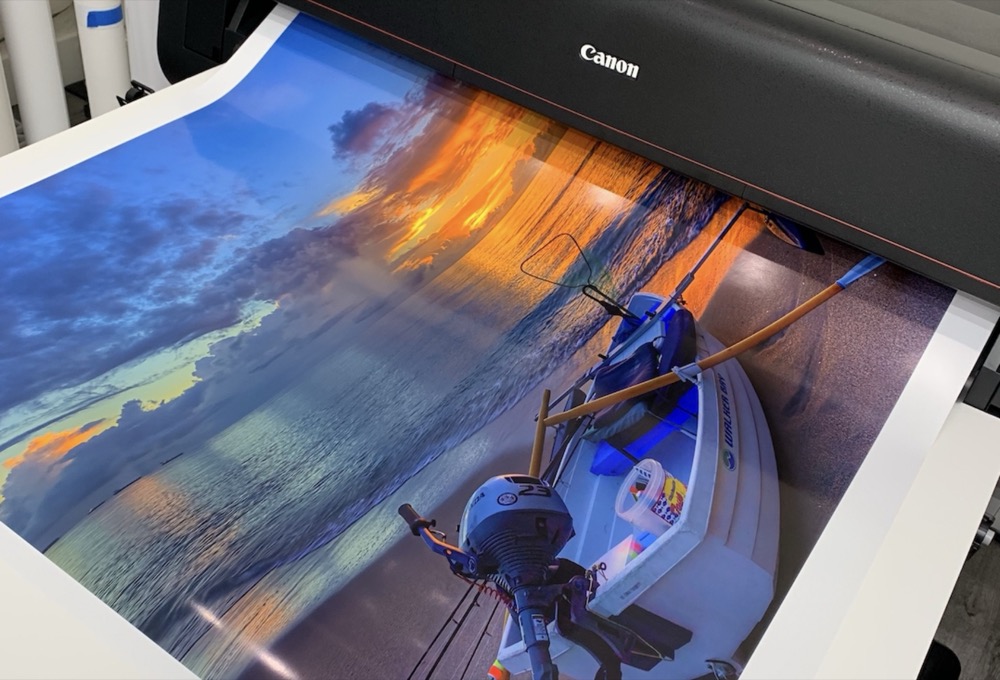
Importance of Choosing the Right Paper
The paper you choose for your fine art prints can significantly impact the final quality and longevity of your artwork. The right paper can enhance colors, add texture, and make sure that your prints stand the test of time. Conversely, the wrong paper can lead to dull colors, poor detail, and a shorter lifespan for your prints.
Types of Fine Art Paper
Archival Paper
Archival paper is designed to last for decades without deteriorating. It is acid-free and lignin-free, making it an excellent choice for preserving the quality of your prints. Common uses for archival paper include fine art prints, photographs, and important documents.
Cotton Rag Paper
Cotton rag paper is known for its luxurious texture and durability. Made from 100% cotton fibers, this paper is ideal for high-quality fine art prints. Its soft, textured surface adds depth and character to your artwork, making it a popular choice among artists in Miami.
Canvas Paper
Canvas paper offers a unique alternative to traditional canvas. It provides the texture and appearance of canvas while being more affordable and easier to handle. Canvas paper is perfect for artists looking to replicate the look of a canvas painting without the cost and hassle of stretching a canvas.
Watercolor Paper
Watercolor paper is specifically designed to handle the absorbency and texture required for watercolor paintings. Its rough surface allows for excellent color retention and detail, making it a great choice for artists who work with watercolors or other wet media.
Baryta Paper
Baryta paper is known for its glossy finish and exceptional depth. It is often used for black and white photography, as it enhances contrast and detail. Baryta paper is also suitable for color prints, providing a rich, vibrant finish that brings your artwork to life.
| Paper Type | Characteristics | Benefits | Common Uses |
|---|---|---|---|
| Archival Paper | Acid-free, lignin-free | Long-lasting, preserves quality | Fine art prints, photographs, important documents |
| Cotton Rag Paper | Made from 100% cotton fibers, soft, textured surface | Luxurious texture, durable, adds depth and character | High-quality fine art prints |
| Canvas Paper | Texture and appearance of canvas, more affordable | Easy to handle, replicates canvas painting look | Artists replicating canvas paintings |
| Watercolor Paper | Rough surface, high absorbency | Excellent color retention, detailed prints | Watercolor paintings, wet media art |
| Baryta Paper | Glossy finish, exceptional depth | Enhances contrast and detail, vibrant finish | Black and white photography, color prints |
Paper Weight and Thickness
Understanding the weight and thickness of paper is essential for choosing the right type for your fine art prints. Paper weight is measured in GSM (Grams per Square Meter), and it affects the durability and feel of the paper. Thicker paper is generally more durable and provides a more substantial feel, while lighter paper is more flexible and easier to handle.
Paper Texture and Finish
Matte Finish
Matte finish paper has a non-reflective surface that reduces glare and provides a smooth, elegant look. It is ideal for prints that require a soft, subtle appearance, such as portraits and fine art reproductions.
Glossy Finish
Glossy finish paper has a shiny, reflective surface that enhances colors and details. It is perfect for prints that need to stand out, such as photographs and vibrant artwork. However, it can be prone to fingerprints and glare, so it may not be suitable for all applications.
Satin and Semi-Gloss Finish
Satin and semi-gloss finish papers offer a balance between matte and glossy finishes. They provide a slight sheen that enhances colors without the high reflectivity of glossy paper. These finishes are versatile and suitable for a wide range of art styles.
Textured vs. Smooth Paper
Textured paper adds depth and character to your prints, making it ideal for artwork that benefits from a tactile quality. Smooth paper, on the other hand, provides a clean, crisp finish that is perfect for detailed prints and photographs. Choosing between textured and smooth paper depends on the desired look and feel of your artwork.
| Finish Type | Surface Characteristics | Benefits | Ideal Applications |
|---|---|---|---|
| Matte Finish | Non-reflective, smooth | Reduces glare, elegant look | Portraits, fine art reproductions |
| Glossy Finish | Shiny, reflective | Enhances colors and details | Photographs, vibrant artwork |
| Satin and Semi-Gloss Finish | Slight sheen, balanced reflectivity | Enhances colors without high reflectivity | Wide range of art styles |
| Textured Paper | Depth, tactile quality | Adds character to prints | Artwork benefiting from texture |
| Smooth Paper | Clean, crisp finish | Perfect for detailed prints | Detailed prints, photographs |
Color Reproduction and Paper Brightness
Paper brightness affects the vibrancy of colors in your prints. Brighter paper can make colors appear more vivid, while lower brightness levels can create a softer, more muted effect. Optical brightening agents (OBAs) are often used to enhance paper brightness, but they can affect the longevity of your prints. Consider the desired color reproduction and longevity when choosing the brightness level for your paper.
Longevity and Archival Quality
Ensuring the longevity of your fine art prints is essential for preserving their quality over time. Acid-free and lignin-free papers are designed to resist yellowing and deterioration, making them ideal for archival purposes. UV resistance is also important, as it helps protect your prints from fading due to exposure to light.
Compatibility with Printing Techniques
Different printing techniques require different types of paper. For example, inkjet and giclée printing work best with specific papers that can handle the ink and produce high-quality results. Make sure that the paper you choose is compatible with your printing technique to achieve the best possible outcome.
Cost Considerations
Balancing budget with quality is important when choosing paper for fine art prints. While premium paper can be more expensive, it often provides better results and longevity. Consider investing in high-quality paper for important projects, and explore cost-effective alternatives for less critical prints.
Case Studies and Examples
Real-world examples and testimonials from artists and photographers can provide valuable insights into the different types of paper used for fine art prints. Learning from the experiences of others can help you make informed decisions and achieve the best possible results for your artwork.
Choosing the right paper for fine art prints is a crucial step in achieving high-quality results. By considering factors such as paper type, weight, texture, finish, color reproduction, longevity, and environmental impact, you can make an informed decision that enhances the beauty and durability of your prints. Whether you're an artist, photographer, or business owner in Miami, selecting the right paper can elevate your artwork and make sure it stands the test of time.
Artful Printers is dedicated to helping you achieve the best possible results for your fine art prints. Our team of experts is here to guide you through the process and provide personalized solutions. Ready to get started? Contact us today at 305-754-3888 to discuss your project and request a quote. Let us help you bring your creative vision to life with our top-rated printing services in Miami.
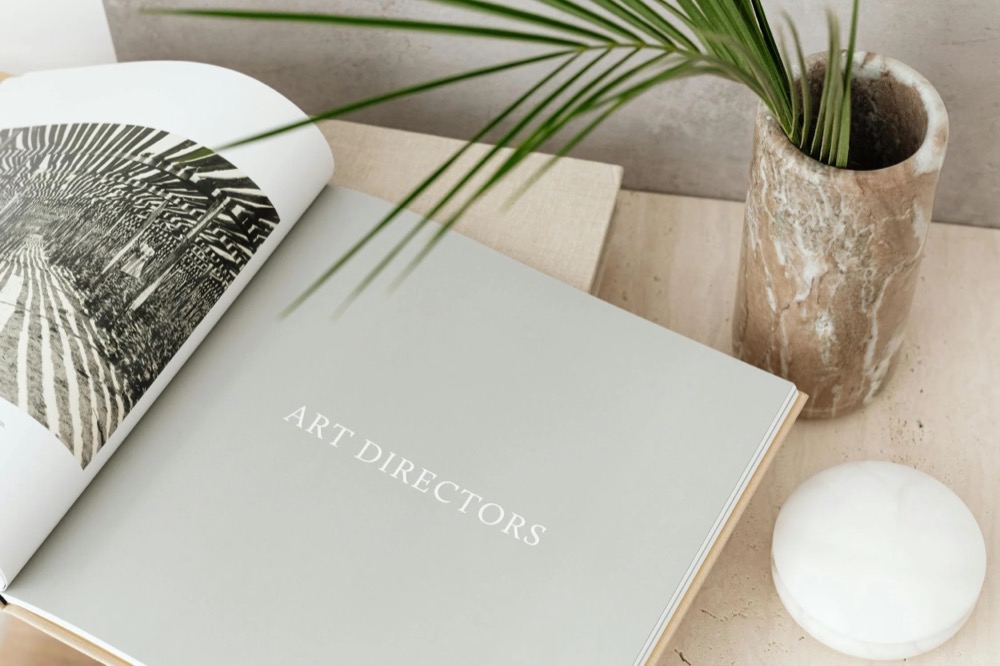 Image Credit: Pexels
Image Credit: Pexels
Fine art printing has seen significant advancements in recent years, offering artists and photographers new ways to bring their creative visions to life. As technology continues to evolve, so do the techniques and materials used in fine art printing. Here, we'll explore some of the emerging trends in fine art printing and how they are shaping the industry in Miami.
High-Resolution Printing
One of the most notable trends in fine art printing is the move towards higher resolution prints. Advances in printing technology have made it possible to produce prints with incredible detail and clarity. High-resolution printing allows artists to capture even the smallest nuances of their work, resulting in prints that are almost indistinguishable from the original artwork.
Giclée Printing
Giclée printing has become increasingly popular among artists and photographers in Miami. This technique uses high-quality inkjet printers to produce fine art prints with exceptional color accuracy and detail. Giclée prints are known for their longevity and resistance to fading, making them a preferred choice for artists looking to create archival-quality prints.
Eco-Friendly Printing
As environmental awareness grows, more artists and printmakers are seeking eco-friendly printing options. This trend includes the use of sustainable materials, such as recycled paper and eco-friendly inks. Eco-friendly printing not only reduces the environmental impact but also appeals to environmentally conscious consumers in Miami.
Metal Prints
Metal prints are gaining popularity for their durability and modern aesthetic. This technique involves printing images directly onto metal surfaces, resulting in prints with vibrant colors and a sleek, contemporary look. Metal prints are ideal for both indoor and outdoor displays, making them a versatile option for artists and photographers in Miami.
Acrylic Prints
Acrylic prints offer a unique way to display fine art with a glossy, high-end finish. This technique involves printing images onto acrylic sheets, which are then mounted to create a stunning visual effect. Acrylic prints are known for their depth and clarity, making them a popular choice for showcasing artwork in galleries and homes across Miami.
Textured Printing
Textured printing is an emerging trend that adds a tactile dimension to fine art prints. This technique involves applying layers of ink or other materials to create a textured surface that mimics the look and feel of the original artwork. Textured printing can enhance the visual appeal of prints and provide a more immersive experience for viewers.
Custom Framing
Custom framing is becoming an integral part of the fine art printing process. Artists and photographers in Miami are increasingly opting for custom frames that complement their prints and enhance their overall presentation. Custom framing allows for greater creativity and personalization, ensuring that each piece is displayed in the best possible way.
Mixed Media Prints
Mixed media prints combine traditional printing techniques with other artistic elements, such as painting, drawing, or collage. This trend allows artists to experiment with different materials and techniques, resulting in unique and innovative prints. Mixed media prints are gaining traction in Miami's art scene, offering a fresh and dynamic approach to fine art printing.
Personalized Art Prints
Personalized art prints are becoming increasingly popular as consumers seek unique and meaningful pieces for their homes and offices. This trend involves customizing prints with personal elements, such as names, dates, or special messages. Personalized art prints make for thoughtful gifts and can add a personal touch to any space in Miami.
3D Printing
3D printing is revolutionizing the fine art printing industry by allowing artists to create three-dimensional prints. This technology enables the production of intricate and detailed sculptures, models, and other artworks that were previously difficult to achieve. 3D printing offers endless possibilities for artists in Miami, pushing the boundaries of traditional fine art printing.
Digital Art Reproduction
Digital art reproduction is becoming more sophisticated, allowing artists to create high-quality prints of their digital artwork. This trend involves using advanced printing techniques to accurately reproduce digital images on various materials, such as paper, canvas, or metal. Digital art reproduction provides artists in Miami with a reliable way to share and sell their digital creations.
Collaborative Art Projects
Collaborative art projects are gaining popularity as artists and printmakers come together to create unique and innovative prints. These projects often involve combining different styles, techniques, and materials to produce one-of-a-kind pieces. Collaborative art projects foster creativity and community within Miami's vibrant art scene.
Limited Edition Prints
Limited edition prints are a growing trend in the fine art printing industry. By producing a limited number of prints, artists can create a sense of exclusivity and value for their work. Limited edition prints are often signed and numbered by the artist, making them highly sought after by collectors in Miami.
The world of fine art printing is constantly evolving, with new trends and techniques emerging all the time. From high-resolution printing and eco-friendly options to metal prints and augmented reality integration, these trends are shaping the future of fine art printing in Miami. By staying informed about these developments, artists and photographers can continue to push the boundaries of their creativity and produce stunning, high-quality prints.
Artful Printers' team will help you explore the latest trends in fine art printing and achieve outstanding results for your work. Ready to explore the possibilities? Contact us today at 305-754-3888 to discuss your project and request a quote.
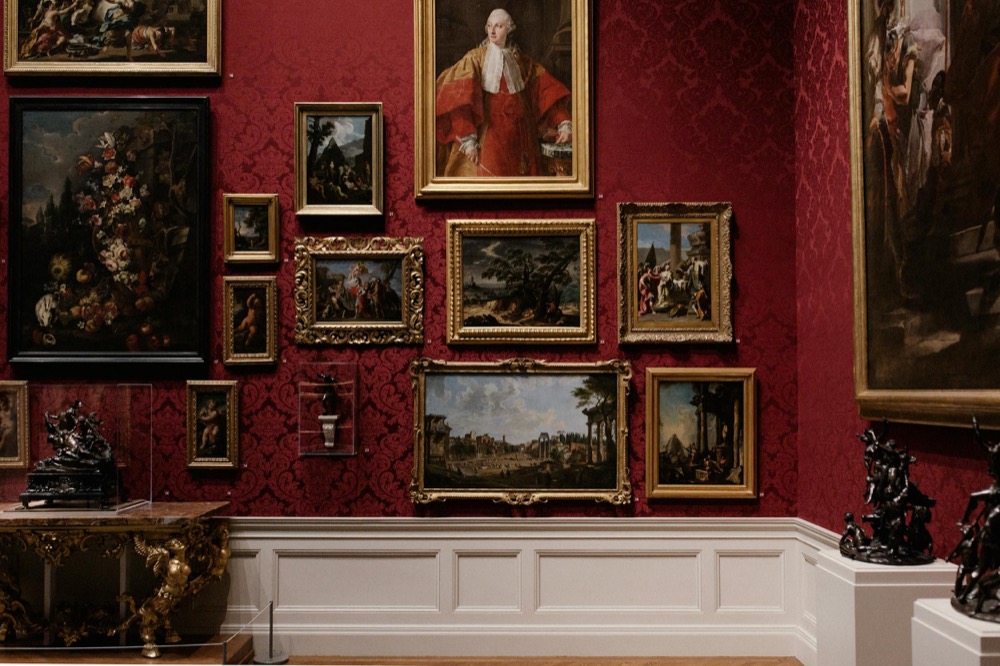 Credit: Pexels
Credit: Pexels
Choosing the right frame for your fine art is essential for enhancing its beauty and ensuring it stands out. The perfect frame can complement your artwork, protect it, and add a finishing touch that makes it truly special. In this article, we'll explore the key factors to consider when selecting a frame for your fine art and how Artful Printers in Miami can help you make the best choice.
Understanding the Importance of Framing
Framing is more than just a way to display your artwork; it plays a crucial role in preserving and showcasing your piece. A well-chosen frame can enhance the colors, textures, and overall impact of your art. It also provides protection from dust, moisture, and physical damage, ensuring your artwork remains in excellent condition for years to come.
Consider the Style of Your Artwork
The style of your artwork should guide your choice of frame. Different styles of art may require different types of frames to complement their unique characteristics. Here are some common styles and suitable framing options:
- Traditional Art: Classic paintings and drawings often look best in ornate, gold, or wooden frames that add a touch of elegance.
- Modern Art: Contemporary pieces can be enhanced with sleek, minimalist frames in black, white, or metallic finishes.
- Photographs: Photographs can be framed in a variety of styles, but simple, clean lines often work best to keep the focus on the image.
- Abstract Art: Abstract pieces can be paired with bold, colorful frames that reflect the dynamic nature of the artwork.
Choosing the Right Material
Frames come in various materials, each offering different benefits and aesthetics. Here are some popular options:
Wood Frames
Wood frames are a classic choice, offering warmth and versatility. They come in a range of finishes, from natural wood tones to painted colors, making them suitable for both traditional and modern art.
Metal Frames
Metal frames provide a sleek, contemporary look and are available in finishes like silver, gold, and black. They are durable and can add a modern touch to any artwork.
Acrylic Frames
Acrylic frames are lightweight and offer a clean, minimalist appearance. They are ideal for modern and abstract art, providing a clear view of the artwork without distractions.
Consider the Size and Proportion
The size and proportion of the frame should complement the artwork without overwhelming it. Here are some tips for choosing the right size:
- Matting: Adding a mat around your artwork can create a visual buffer between the art and the frame, enhancing the overall presentation. Choose a mat color that complements the artwork and frame.
- Frame Width: The width of the frame should be proportional to the size of the artwork. Larger pieces may require wider frames, while smaller pieces can be framed with narrower options.
Matching the Frame to Your Decor
Consider the decor of the room where the artwork will be displayed. The frame should complement the existing furnishings and color scheme. Here are some ideas:
- Classic Interiors: Ornate, gold, or wooden frames can add a touch of sophistication to traditional interiors.
- Modern Spaces: Sleek, minimalist frames in black, white, or metallic finishes can enhance contemporary decor.
- Eclectic Rooms: Bold, colorful frames can add a playful touch to eclectic spaces, reflecting the unique style of the room.
Protecting Your Artwork
Protection is a key consideration when framing fine art. Here are some options to consider:
UV-Protective Glass
UV-protective glass helps prevent fading and damage caused by exposure to sunlight. This is especially important for artworks displayed in well-lit areas.
Non-Glare Glass
Non-glare glass reduces reflections and glare, providing a clear view of the artwork from any angle. This is ideal for pieces displayed in rooms with multiple light sources.
Premium Glazing Options
For the best protection and clarity, consider these high-quality glazing options for your art:
Museum Glass
Museum Glass is a top-quality option that offers excellent clarity and protection. It has these features:
- Almost invisible due to its anti-reflective coating
- Blocks 99% of UV rays to stop fading
- Shows true colors of the artwork
- Strong and resistant to scratches
Museum Glass is great for valuable art, historical items, or any piece where color accuracy and long-term care are important.
Museum Acrylic
Museum Acrylic is a high-quality alternative to glass with these benefits:
- Light in weight, good for large artworks
- Won't shatter, making it safer
- Repels dust
- Blocks up to 99% of UV rays
- Very clear with little reflection
Museum Acrylic works well for big artworks, pieces in busy areas, or when you need to ship the art.
Both museum glass and museum acrylic are the best options for protecting and displaying your art. They keep your artwork looking great and safe for a long time.
Consulting with Experts
Choosing the perfect frame can be a complex process, but you don't have to do it alone. Consulting with framing experts can provide valuable insights and recommendations tailored to your specific artwork and preferences.
Artful Printers can help you select the perfect frame for your fine art. A wide range of framing options and personalized consultations are available to ensure your artwork is displayed beautifully. Ready to get started? Contact us today at 305-754-3888 to discuss your project and request a quote.
Printing on metal has become a popular choice for artists and photographers looking to create stunning, durable fine art prints. One of the most advanced techniques for achieving high-quality metal prints is UV printing. In this article, let's explore the process of printing fine art on metal using UV printing and how it can benefit your artistic projects in Miami.

.png)

